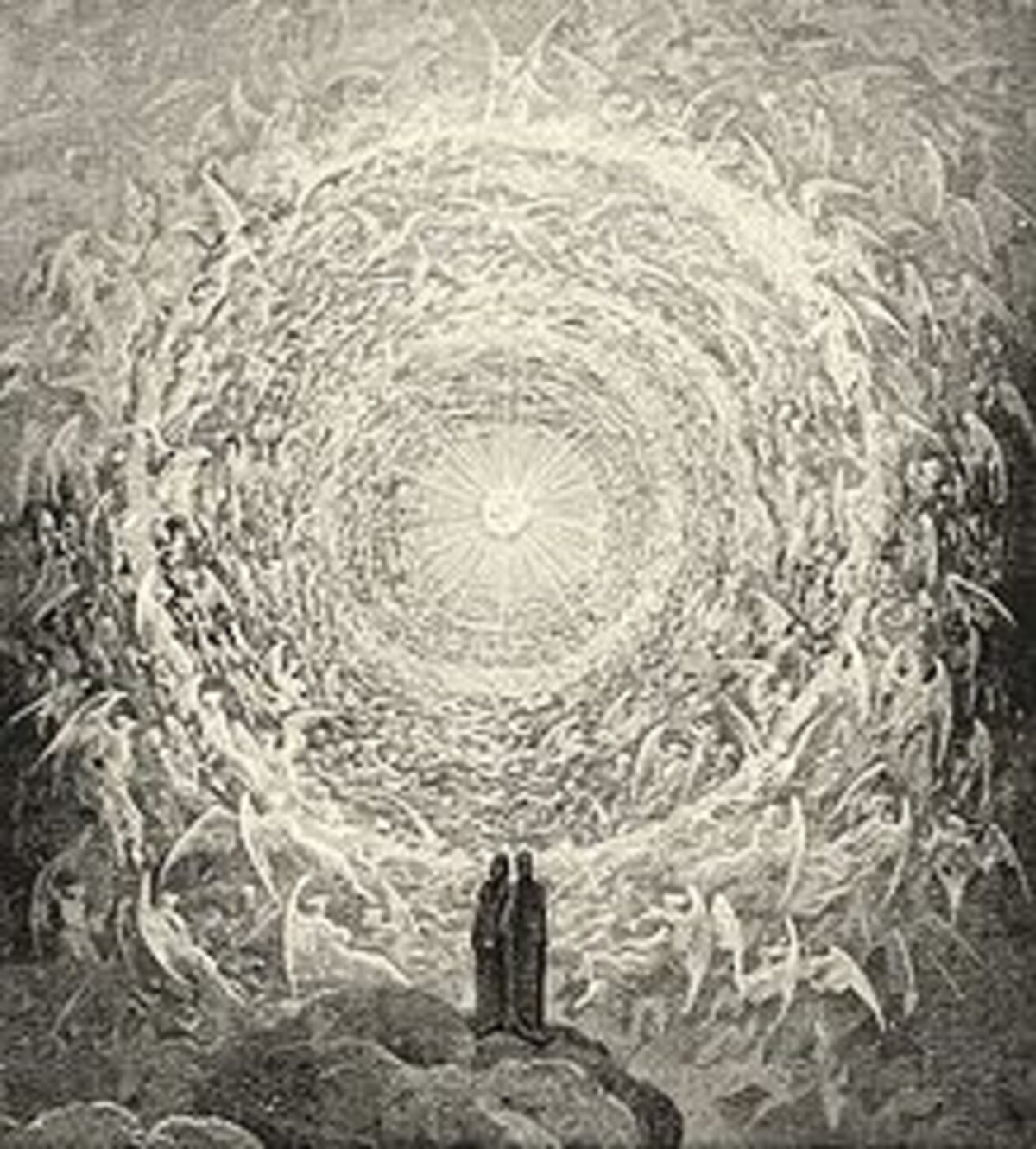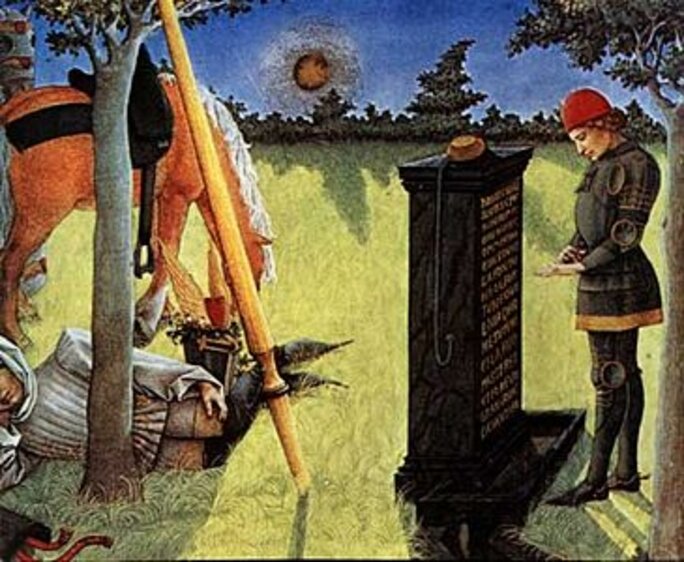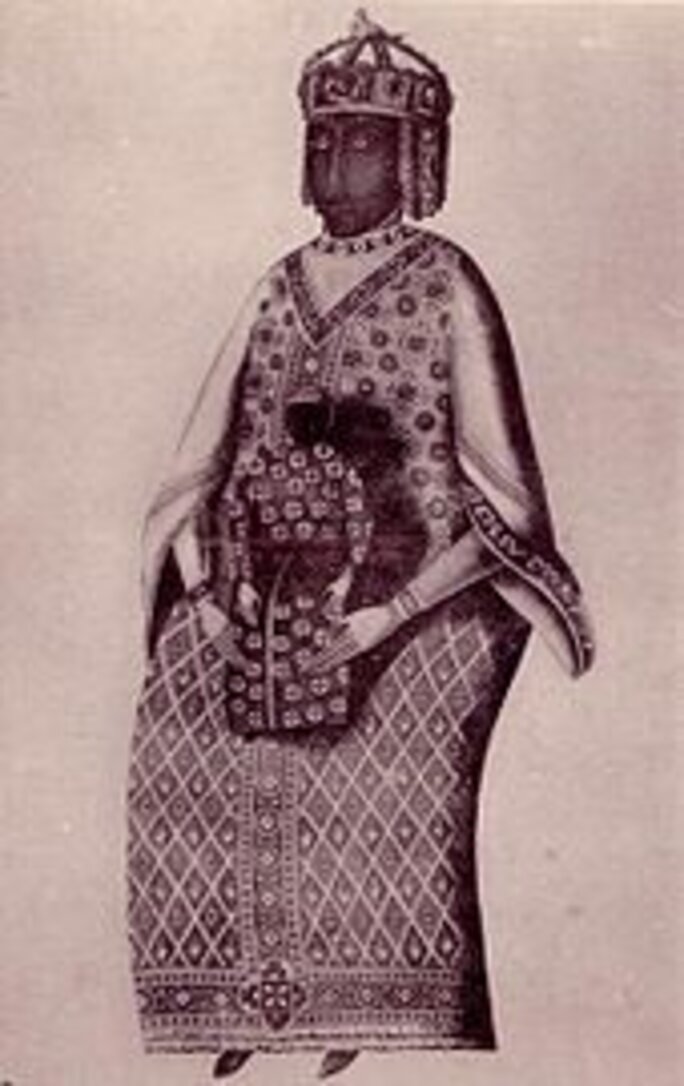THE GOLDEN CHAIN OF THE FAITHFUL OF LOVE
HOMMAGE TO DR. CHENAY THE OLDEST FRENCH DOCTOR
There is a secret society of men and women who recognize each other and converse beyond centuries, seas and mountains, the society of the Faithful of Love. Dante and his companions created the term in Western Europe, I Fideli d’Amore according to tradition came from the East and returned there to disapear. But as the orientalist metaphysician Henri Guénon (1888-1951) said about the Rosicrucians : The term Rosicrucians is properly the designation of an actual initiatory stage, however the fact of belonging to a definite organisation is obviously not a prerequisite for its possession. It is also the case nowadays for the Faithful in Love.
The Crusades had started the cultural exchange between Est and West, and the Templars were the main protagonists. They became the agents of a transmission of antique knowledge and wisdom from the Near and Middle East, resting on Hermeticism and Neoplatonism. The Middle Ages were according to Guénon the privileged moment of active intellectual exchanges between East and West. Saint Bernard of Clairvaux (1090-1153) was the Templars’ fervent advocate, he contributed to the writing of the Order’s Rules and his uncle became its Grand Master. Then the spires of light of the great gothic cathedrals began to rise toward Heaven, first on French soil then all over Northern Europe. They were the vibrant witnesses in stone of the faith and fervour expressed in the cult of Mary, Our Lady, the Mother of God crowned on the tympanums of so many churches and cathedrals. She was the exaltation of the feminine principle, sung by minstrels and troubadours in Courtly Love and glorified by Saint Bernard Our Lady’s minstrel, who named her Star of the Sea. For him God is Love, and so he said : Love is in itself its own merit and its own reward. In his ninety Sermons on the Song of Salomon he celebrates Divine Love through the allegory of a biblical wedding song on an erotic note.

Dante in the DivinaComedia(1265-1321) names him the supreme guide to God, who is Love itself. Unlike the mystical monk, the poet had been guided in his spirituel quest by the earthly beauty of a woman, Beatrice, who became his muse and inspiration. In the Infernoshe summons Virgil out of limbo to guide Dante, a disciple of the Latin poet, on his initiatory path. She then becomes the Florentine poet’s guide out of Purgatory towards the Empyrean in Paradiso, Canto XXXI. To show her exalted role and position Dante places her at the feet of the Virgin Mary in Canto XXXII.
The initiatory role of a woman loved by the poet and mystic on his spiritual journey evokes the experience of the Andalusian poet Ibn’Arabi (1166-1240) as described in the Illuminations Mecquoises, Illuminations from Mecca translated by Henri Corbin (1903-1978). The French orientalist philosopher shows the influence of Sufi mystics on the Florentine poet in his study Imagination créatrice dans le soufisme d’Ibn ‘Arabî, Creative imagination in Ibn ‘Arabî’s Sufism. In 1201 (A.H. 598) during a pilgrimage to Mecca, the poet stayed in the house of a Persian family from Isfahan. The daughter of the family named Nizam was exceptionally gifted, she was beautiful in body and soul, and highly intelligent. Her very name ayn al-Shams wa’l-Baha, Beauty, Harmony, Eye of the Sun, appeared to Ibn ‘Arabi as the incarnation of Sophia, Eternal Wisdom. The young woman was for Ibn ‘Arabi what Beatrice was for Dante. She was a real person while being ‘in person’ a theophanic figure, Sophia aeterna, invoked by Dante’s companions under the name of Madonna Intelligenza, Corbin explains showing Plato’s influence on both poets.
According to William Anderson in Dante the Maker, the Faithful of Love were rare spirits who were struggling to devise a code of life that retained from chivalry the idea of nobility, while making it depend on personal virtue instead of inherited wealth and breeding, and that preserved spiritual aspirations not unlike those of some mendicants without demanding a life of withdrawal or celibacy.They formed a closed brotherhood devoted to achieving a harmony between the sexual and emotional sides of their natures and their intellectual and mystical aspirations.La catena d’oro, The Golden Chain of the Fidéli d’amorecarried on in Italy with Cavalcanti, Petrarch and his friend Boccacio, Ficino, Pico della Mirandola, Giordano Bruno among other poets and philosophers influenced by Neoplatonism and Hermeticism. In France King René, Duke of Anjou and Provence, King of Naples, Sicily and Jerusalem among other titles, emulated the virtues of chivalry in his life and his works. In 1448 he created the Ordre du Croissant, its motto loz en croissant in old French meant growing in vertue one deserves praise.He was a refined and cultured man fluent in greek, latin and italian and fascinated by the East, he studied arab calligraphy.He wrote various manuscripts on courtly life and ordered a French translation of l Teseida delle Noze d'Emilia, written by the young Boccacio at the Neapolitan court of his ancestor Robert of Anjou during his stay from1327 to 1340.

In 1460 he set out his courtly and chivalrous ideals in an allegorical novel Le Livre du Cœur d’Amour épris,The Book of the Heart in Love , where the feelings of Honour and Love are personified in the same tradition as in the Roman de la Rose, The Romance of the Rose. The sixteenth illuminations are imbued with transcendental beauty and poetry. They were for a long time thought to be by the hand of the King himself, but lately they have been attributed to Barthelemy d'Eyck, a Flemish master of Provencal tradition. There are seven versions of the manuscripts Livre du Cœur d’Amour épris, one in Vienna in the Österreichische Nationalbibliothek, and another in the Bibliothèque Nationale de France in Paris : https://gallica.bnf.fr/ark:/12148/btv1b60005361
René Guénon while denouncing the disappearance of this elevated ideal of life, according to him through the degeneration of esoterism in the West, acknowledges its continuity in a lineage of exceptional human beings, thus Novalis in the 19th century, comparing him with Raphael: The German Romantic poet and the Italian painter belong to the same spiritual genealogy of the visionay artists who were initiated to the Fidelity of Love through the providential apparition in their lives of a particular face of beauty, a human face, like Sophie’s for Novalis. He gazed upon her with the eyes of his soul, while Raphael received one night the same revelation through the divine image of the Virgin Mary. Novalis wrote in Henri d’Ofterdingen :They are no longer two but Henri and Mathilde / Are one to the other joined in one same image. Antoine de Saint Exupéry echoes his words : To love is not to gaze at each other but to look together in the same direction, and in the Petit Prince : One can only see well though the heart. What is essential is invisible to the eye. Rûzbehân Baqlî, the Persan mystic and poet (1128-1209), who had lived the same love experience as Ibn’Arabi in Mecca, declared in the first chapter of the Jasmin des Fidèles d’Amour, The Jasmin of the Faithful of Love, that one must understand the secret of the human form,and put the eyes of (one’s) body at the service of the eyes of one’s heart.
These thoughts on of love in its most noble sense as the one and only motivation in life, and the way to knowledge, in which I recognize myself, came to me as I warched a programme on television 13h15, le samedion France 2 on May 16th 2020, which showed during the Covid-19 epidemic the portrait of Dr Chenay. He is at ninety nine years old the doyen of French doctors, still practising at Chevilly-Larue in the Val de Marne, a town of 19 000 inhabitants with only three doctors to serve in the medical desert of a forgotten suburb where life can sometimes be very violent.
I then thought that the Faithful of Love are still with us today, even if perhaps invisible. But they can be recognized for their ideals of life and dedication to the service of others, as could be seen in so many examples of altruism, kindness, generosity and solidarity in the last few months of this world pandemic. These persons are a ferment of Love in society, even if they are not conscious of it themselves so engrossed they are in their work and sacerdoce, but Love can be declined in different ways. Nowadays it seems that only Eros as Carnal Desire, the attraction between opposites, the masculine and the feminine, is recognized. But Anteros, his twin brother, also born from Venus, is ignored, yet he is at the source of Platonic Love, sublimated and exalted. France had been the holder of this miracle and this mystery for centuries in all the wealth of its cultural, spiritual, artistic and literary culture. The great cathedrals dedicated to Notre Dame have often been built on the site of older sanctuaries belonging to older feminine godesses, thus Isis whose cult was very popular with the Romans. So it is at Rocamadour where a mummy named then Saint Amadour was discovered in 1166, and some Egyptian symbols can still be seen cut out in the rocks. At Chartres, where there was a Neoplatonic Academy in the Midlle Ages, a Black Virgin until the Revolution bore witness of the spiritual bond between East and West as in Rocamadour. Black Virgins appeared in Europe at the time of the Crusades, there are more than 180 examples in the South of France.

In the 13th century, King Louis IX, Saint Louis, endowed the cathedral of the Puy-en-Velay of a black statue of a Virgin and Child of oriental style which he had been given while detained prisoner during the Seventh Crusade. The black colour of these statues refers to the antique concept of black, a colour symbol of the Earth, altogether life-giver and destroyer, a reflection of Kali the Black One on in India. It refers also to what is secret,hidden, the occult as in the ancient name of Egypt, al-kemia, the Black Earth, from which came the teaching of Hermes Trismegistus, giving also its name to alchemy, l’Oeuvre au noir, The Abyss or Zeno of Bruges in English, the book of Marguerite Yourcenar.
This Hermetic Tradition born in the East was for centuries the ferment of Western civilisation. In France, for various political, religious and philosophical reasons, it was the target of many attacks, the most violent one during the French Révolution, when many sanctuaries and works of art, part of this ancient heritage, were destroyed. Victor Hugo who fought against the destruction of Notre Dame of Paris confirms it :Notre Dame de Parisis the most satisfactory summary of the Hermetic science, while the church of Saint - Jacques La Boucherie is it most complete hieroglyph. One could possibly see in the fire which broke out in 2019 at Notre Dame the last manifestation of those obscure forces seeking to eradicate this potent witness in stone of the continuity of a Neoplatonic tradition uniting Christianity to Islam and Judaism through esoterism. Henri Corbin, ex-student and friend of the great orientalist Louis Massignon, promoted this vision and in 1974 he created an International Centre of Comparative Spiritual Research at the Saint-John of Jerusalem University where representatives of the three monotheist religions, the People of the Book, Jews, Christians and Muslims, could meet and exchange views, united by the Mystical Jerusalem. He had found in his wife Stella the inspired and inspiring companion and collaborator of his work in defence of the mystical vision in the East and in the West found in the works of poets and prophets resting on imagination, the realm of’Anteros.
I thought of this sublimated Love which opens the heart to the Love for others, the Ancient Greeks’ Agape, the Christians’ Caritas, while watching on the TV screen Dr. Chenay with his patients. He showed them infinite patience and attention, kindness shining in his eyes. Seven years spent in psychiatry had taught him the secret recesses of the human soul. His lighthearted and mischievous sense of humour in front of two Muslim women, or an aged priest in a retirement home, showed an accomplished man of the world, reserved, sensitive and diplomat, as much as a sympathetic and benevolent practitioner. Tears came to my eyes watching this miracle of humanism in the midst of an isolated community lost in this pandemic in a forgotten suburb, as said the journamist. One had to listen to Dr. Chenay’s testimony, who faced with the health emergency has decided to retire. He has known the typhus epidemic in the Second World War, and he makes a shattering comparison between the medical staff’s working conditions then and the present ones in the Covid-19 epidemic : One can work on condition that the administration allows us to operate in acceptable conditions. The actual conditions are not acceptable. All the doctors are at risk. In Italy 60 doctors have died uselessly because they were not given proper means of protection. In France about 30 have died because they were not given the proper masks not medical products for disinfecting. It would be madness to work in those conditions. In 1943 I was pressed into service by the Germans, I was still a medecine student, there was a typhus epidemic together with typhoid. We were given uniforms, modified gaz masks, boots and overalls. Every night before leaving we undressed and everything we had worn was steamed. We were all naked in front of the steam room, but nobody caught typhoid nor typhus, it lasted several months and none of us were infected.
His testimony is overwhelming as much as the dedication to his vocation. The medical field is where I feel most useful, where I am useful, still carrying on a permanency for six hours twice a week. To the Muslim ladies who tease him affectionately, he replies lightheartedly : I have been married twice, I don’t count the other ones, I only count the official ones… And while examining the old priest in the retirement home kept by nuns, where he had been the appointed doctor for sixty years, he declares: Fortunately the Sisters are there, I have a wife, you have the Sisters. One needs women after all! There has been no Covid19 case in the place, a great victory for Dr. Chenay, who says that near his home in an in an Ehpad there has been 50% dead. The people in the Ehpads have been sacrificed, to see old eople died has not bothered anybody. It is one of the things which have hurt me most, and I do not feel remorse in giving up my work.
On the 1st of May, most opportunely during the sanitary emergency, Emmanuel Macron and his wife invited him to the Élysée Palace to congratulate him on his long career. The journalist asks the doctor : Did you tell him you were retiring ? No, he replies. Did you tell him you were angry ? No, he repeats. She insists : Doctors are heroes ?He explains his silence by his clearsightedness : A concert of pans for a month, and then nothing after. She ends : Touched by the honour, but not deceived. Of course the medals and bonuses promised by the President could not possibly begin to honour this man remarkable for his humanity and dignity. It is a stricking contrast between the old man dignified and silent, seated with his wife by his side and the presidential couple, she stiffly attired in her Haute Couture Louis Vuitton garment and he making procative eyes to the camera as he cannot stop himself doing even during the ceremony of the Unknown Soldier under the Arc de Triomphe on the 8th of May while washing his hand with hydroalcoholic gel. There they all are in the Élysée ballroom redecorated at great cost by Brigitte Macron who had decided to show an ill-chosen solidarity with the public hospitals in selling by aution the furniture of the Mobilier National, which she appears to consider her own property to dispose of. The Macrons’ ostentation and imposture are faced with the autheticity and dedication of a life spent at the service of others. I then thought that in those days of misfortune La Fontaine would have found there inspiration for a fable with a stinging moral.
Dr. Chenay’s love for his wife, twenty years younger than he, is shining throughout, and she shares it heartedly. She takes a photo of him in their garden on her mobile and says lovingly : He is beautiful my chap. With her at his side he has rebuilt a life after the tragic and violent death of his second wife, mother of his two children. She was his medical secretary and she died stabbed seventeenth times with a knife by a dissatisfied patient. He became a widow at nearly eighty years old and then a miracle happened, he met Suzanne at his practice, fell in love and married her. She looks after him, she has given him more years to live, and he wants to live as long as possible not to leave her alone. For the sake of their love so precious he has taken the difficult decision to close his practice, their couple is more important than his work. But he says he is going on, just a bit more slowly : One does not give up, one is morally engaged. And there is a profund friendship with them (his patients). It is just a new life, having another go, its marvellous, one must enjoy today.
From 1949 to 1977, Henri Corbin participated to the Cercle Eranos’s conferences created in Switzerland in 1933 as a place of meeting and experience where Eastern and Western philosophies could meet …in their symbolic imagination. He became one of its pillars together with Carl Jung whose Answer to Job was for him a revelation. It is “in Eranos”, he said, that the pilgrim from Iran had to meet he whose « Answer to Job », made him understand the answer he was himself bringing back from Iran. The way to the eternal Sophia. May C.G. Jung be once more thanked for it. The Orient means the spiritual world which is the Greater Orient from which rises the pure sun of intelligence, and the "Orientals" are those whose inner dwelling welcomes the flame of this eternal dawn, he added and went on : Earth, Angel, Woman, all of this in one single thing I adore, and which is in this forest. It is the forest as the symbolic place of spiritual initiation, the Obscure Forest of Dante from the first verse of the Divina Commediain the Inferno :Nel mezzo del cammin di nostra vita mi ritrovai per una selva oscura, In the midst of the path of our life I found myself in an obscure forest, it is the Forest of Long Waitingof the poet Charles d’ Orléans, and of René of Anjou in Le Cœur d’Amour épris. Both had known prison, the former in English hands in the Tower of London during the Hundred Years War, the latter as the Duke of Burgundy’s captive.
Corbin also met there with the art historian and anarchist poet Herbert Read, who in 1940 explained in his work The Philosophy of Anarchism,how the level of social discrimination acceptable in a particular society determines its progress in terms of humanism : If you abolish all the other classes and discriminations and keep bureaucracy, you are still very far froma classless society, as bureaucracy is itself the core of a class whose interests are totally opposed to the people they pretend to serve, thus furthering the personal ambitions and megalomania of professional politicians. The British pacifist doctor and author, Alex Comfort, expanded on the theme in his text Authority and Delinquency published in 1950. He developed the concept in showing that the bureaucratic State from its very structure encourages the rise to power of would-be leaders with psychopatic tendencies who impose themselves as dictators.
In this sombre time of misfortune and death, Dr. Chenay’s wonderful love story and his exemplary dedication to his medical profession is so moving that it shines like a radiant star. It gives back hope to all those who in those dark days have gone beyond the prevailing cynicism and materialism in today’s society with no other values than money and appearances, of which the Macrons are the worse example. The Macrononian balloon has been deflated during these past few months of the epidemic, it is only a question of time before it bursts out completely . And then there will be a total turnraround, a return to fundamentals, it has perhaps already began. In adversity, faced with fatality, the French people has found again the ancestral sense of sharing with one another, just as my good grandmother used to lay on the family table, the beggar’s place. One finds again the soul of the villages in the French way, that is solidarity, a volunteer stated in a report on France 3 television from Offin, in the Pas-de-Calais, where during the lockdown the mayor was delivering to the inhabitants boxes of fruit and vegetables from the local market gardeners. I found this solidarity again in Egypt, at the home of one of King Farouk’s cousin whose son was my husband’s friend. I often used to stay with her and at lunchtime she had open door, before going to her appartments at 6pm to read the Koran with her friend the sheikh.
The Golden Chain of the Faithful of Love is not broken, even if nowadays the world seems little open to its high-minded ideals.. The Prime Minister Edouard Philippe resumed it at the beginning of his mandate in this sharp remark : One does not give a damn for beautiful souls, they don’t get elected… In this mad, unstable 21st century, torn apart by factions between men and women, between religions, between people and continents, East and West need more than ever this message of union in Harmony, according to Jacob Boehme : God is neither a man nor a woman, He is the masculine Virgin. Henri Corbin who has contributed so much in the 20 th century to the diffusion of oriental mystical philosophy and poetry, and to the renewal of interest in the subject said : To know what one is, who one is, to know that one comes from higher spheres, where are our origins, that is already to be saved. René Guénon predicted it 1927 dans leRoi du Monde, The King of the World : In the present circustances when events occur with such a speed that many things for which the reasons are not immediately clear could well find, and sooner than expected, some unforeseen applications otherwise altogether unpredictable. This pandemic will perhaps have helped in making mankind once more aware of its humanity, of the sacredness of life and in life, of its spirituality for so long neglected for the world of earthly illusions, which is the world of discord, division, disunity, to find as Dante did in Canto XXXIII of the Paradiso : L’amor che move il sole e l’altre stelle. Love which moves the sun and the stars.
Monique Riccardi-Cubitt,
Paris, 2nd June 2020



